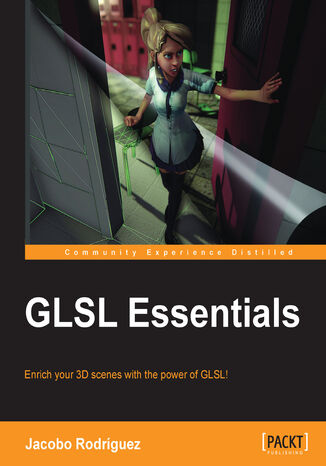Categories
-
- Bitcoin
- Businesswoman
- Coaching
- Controlling
- E-business
- Economy
- Finances
- Stocks and investments
- Personal competence
- Computer in the office
- Communication and negotiation
- Small company
- Marketing
- Motivation
- Multimedia trainings
- Real estate
- Persuasion and NLP
- Taxes
- Social policy
- Guides
- Presentations
- Leadership
- Public Relation
- Reports, analyses
- Secret
- Social Media
- Sales
- Start-up
- Your career
- Management
- Project management
- Human Resources
-
- Architektura i wnętrza
- Health and Safety
- Biznes i Ekonomia
- Home and garden
- E-business
- Ekonomia i finanse
- Esoterecism
- Finances
- Personal finance
- Business
- Photography
- Computer science
- HR & Payroll
- For women
- Computers, Excel
- Accounts
- Culture and literature
- Scientific and academic
- Environmental protection
- Opinion-forming
- Education
- Taxes
- Travelling
- Psychology
- Religion
- Agriculture
- Book and press market
- Transport and Spedition
- Healthand beauty
-
- Office applications
- Data bases
- Bioinformatics
- IT business
- CAD/CAM
- Digital Lifestyle
- DTP
- Electronics
- Digital photography
- Computer graphics
- Games
- Hacking
- Hardware
- IT w ekonomii
- Scientific software package
- School textbooks
- Computer basics
- Programming
- Mobile programming
- Internet servers
- Computer networks
- Start-up
- Operational systems
- Artificial intelligence
- Technology for children
- Webmastering
-
- Antology
- Ballade
- Biographies and autobiographies
- For adults
- Dramas
- Diaries, memoirs, letters
- Epic, epopee
- Essay
- Fantasy and science fiction
- Feuilletons
- Work of fiction
- Humour and satire
- Other
- Classical
- Crime fiction
- Non-fiction
- Fiction
- Mity i legendy
- Nobelists
- Novellas
- Moral
- Okultyzm i magia
- Short stories
- Memoirs
- Travelling
- Narrative poetry
- Poetry
- Politics
- Popular science
- Novel
- Historical novel
- Prose
- Adventure
- Journalism, publicism
- Reportage novels
- Romans i literatura obyczajowa
- Sensational
- Thriller, Horror
- Interviews and memoirs
-
- Archeology
- Bibliotekoznawstwo
- Cinema studies
- Philology
- Polish philology
- Philosophy
- Finanse i bankowość
- Geography
- Economy
- Trade. World economy
- History and archeology
- History of art and architecture
- Cultural studies
- Linguistics
- Literary studies
- Logistics
- Maths
- Medicine
- Humanities
- Pedagogy
- Educational aids
- Popular science
- Other
- Psychology
- Sociology
- Theatre studies
- Theology
- Economic theories and teachings
- Transport i spedycja
- Physical education
- Zarządzanie i marketing
-
- Health and Safety
- History
- Road Code. Driving license
- Law studies
- Healthcare
- General. Compendium of knowledge
- Academic textbooks
- Other
- Construction and local law
- Civil law
- Financial law
- Economic law
- Economic and trade law
- Criminal law
- Criminal law. Criminal offenses. Criminology
- International law
- International law
- Health care law
- Educational law
- Tax law
- Labor and social security law
- Public, constitutional and administrative law
- Family and Guardianship Code
- agricultural law
- Social law, labour law
- European Union law
- Industry
- Agricultural and environmental
- Dictionaries and encyclopedia
- Public procurement
- Management
-
- Africa
- Albums
- Southern America
- North and Central America
- Australia, New Zealand, Oceania
- Austria
- Asia
- Balkans
- Middle East
- Bulgary
- China
- Croatia
- The Czech Republic
- Denmark
- Egipt
- Estonia
- Europe
- France
- Mountains
- Greece
- Spain
- Holand
- Iceland
- Lithuania
- Latvia
- Mapy, Plany miast, Atlasy
- Mini travel guides
- Germany
- Norway
- Active travelling
- Poland
- Portugal
- Other
- Przewodniki po hotelach i restauracjach
- Russia
- Romania
- Slovakia
- Slovenia
- Switzerland
- Sweden
- World
- Turkey
- Ukraine
- Hungary
- Great Britain
- Italy
-
- Philosophy of life
- Kompetencje psychospołeczne
- Interpersonal communication
- Mindfulness
- General
- Persuasion and NLP
- Academic psychology
- Psychology of soul and mind
- Work psychology
- Relacje i związki
- Parenting and children psychology
- Problem solving
- Intellectual growth
- Secret
- Sexapeal
- Seduction
- Appearance and image
- Philosophy of life
-
- Bitcoin
- Businesswoman
- Coaching
- Controlling
- E-business
- Economy
- Finances
- Stocks and investments
- Personal competence
- Communication and negotiation
- Small company
- Marketing
- Motivation
- Real estate
- Persuasion and NLP
- Taxes
- Social policy
- Guides
- Presentations
- Leadership
- Public Relation
- Secret
- Social Media
- Sales
- Start-up
- Your career
- Management
- Project management
- Human Resources
-
- Antology
- Ballade
- Biographies and autobiographies
- For adults
- Dramas
- Diaries, memoirs, letters
- Epic, epopee
- Essay
- Fantasy and science fiction
- Feuilletons
- Work of fiction
- Humour and satire
- Other
- Classical
- Crime fiction
- Non-fiction
- Fiction
- Mity i legendy
- Nobelists
- Novellas
- Moral
- Okultyzm i magia
- Short stories
- Memoirs
- Travelling
- Poetry
- Politics
- Popular science
- Novel
- Historical novel
- Prose
- Adventure
- Journalism, publicism
- Reportage novels
- Romans i literatura obyczajowa
- Sensational
- Thriller, Horror
- Interviews and memoirs
-
- Philosophy of life
- Interpersonal communication
- Mindfulness
- General
- Persuasion and NLP
- Academic psychology
- Psychology of soul and mind
- Work psychology
- Relacje i związki
- Parenting and children psychology
- Problem solving
- Intellectual growth
- Secret
- Sexapeal
- Seduction
- Appearance and image
- Philosophy of life
Gloria victis. Lektura z opracowaniem
Kanoniczny utwór Elizy Orzeszkowej, Gloria victis, wydajemy z myślą o uczniach - stosując wygodne marginesy i czcionkę ułatwiającą czytanie, bez cięć w treści, uzupełniając tekst o przypisy, wyjaśniające trudne lub archaiczne zwroty. Książki z serii Lektury wydawnictwa Pumilio zawierają niezbędnik ucznia: opracowanie z biogramem autora, streszczenie, omówienie najważniejszych zagadnień i pojęć literaturoznawczych, które dotyczą Gloria victis oraz epoki, w której powstało. Niezbędnik przyda się nie tylko na lekcjach języka polskiego, ale także w trakcie powtórek do egzaminu maturalnego. Seria Lektury wydawnictwa Pumilio powstaje we współpracy doświadczonych literaturoznawczyń i dydaktyczek, a opiekę merytoryczną nad serią sprawuje dr Agnieszka Wójtowicz-Zając, która dba o zgodność treści z podstawą programową oraz wysoki poziom językowy opracowań.
Oni (R. 1863) ...Był w zamkniętym, cichym pokoju wieczór zimowy, długi, gdy ta dawna znajoma moja, z twarzą na światło lampy obróconą, z wnętrza głębokiej zadumy mówiła: — Pytanie twoje o moje wspomnienia, prośby twoje, abym swoje wspomnienia twojej pamięci powierzyła, przenoszą „duszę moją utęsknioną w wiosnę ową, w ów sen, w ową godzinę, którą niegdyś zegar przeznaczeń wydzwonił wielkim głosem. [...]Eliza OrzeszkowaUr. 6 czerwca 1841 r. w Miłkowszczyźnie Zm. 18 maja 1910 r. w Grodnie Najważniejsze dzieła: Nad Niemnem (1888), Cham (1888), Meir Ezofowicz (1878), Gloria victis (1910), Dobra pani (1873), A...B...C... (1873), Niziny (1885), Dziurdziowie (1885) Polska pisarka nurtu pozytywizmu znana pod nazwiskiem męża, Piotra Orzeszko, nazwisko rodowe: Korwin-Pawłowska. Publikowała pod pseudonimami: E.O., Bąk, Wa-Lit-No, Li...ka, Gabriela, Litwinka. Pierwszymi jej tekstami były powieści tendencyjne (Marta 1873); cele swojej wczesnej twórczości przedstawiła w rozprawach: Kilka uwag nad powieścią (1866) i Listy o literaturze (1873). Drugim etapem pisarskim Orzeszkowej był realizm (Nad Niemnem), oscylujący niekiedy w kierunku naturalizmu (Dziurdziowie). Teoretycznoliterackie opracowanie założeń powieści realistycznej znalazło się w rozprawie O powieściach T.T. Jeża z rzutem oka na powieść w ogóle (1879). Późne utwory noszą cechy prozy modernistycznej (tom Gloria victis). Najsłynniejsza powieść Orzeszkowej, Nad Niemnem, dotyczy tematu tożsamości narodowej, będąc jednocześnie uczczeniem powstania styczniowego, w którym autorka czynnie brała udział. Samo powstanie było bardzo ważną częścią jej życia - w swoim domu ukrywała ostatniego dyktatora tego zrywu narodowego, Romualda Traugutta, osobiście też organizowała zaopatrzenie i pomoc lekarską dla powstańców. Pisarka utrzymywała ścisłe kontakty ze środowiskiem literackim: M. Konopnicka była jej bliską przyjaciółką jeszcze z pensji; ożywiona korespondencja łączyła Orzeszkową z L. Méyetem i Z. Miłkowskim; była związana z tygodnikiem Bluszcz. Nominowana do Nagrody Nobla w 1905 r., przegrała jednak z H. Sienkiewiczem. Twierdziła, że literatura powinna odpowiadać za los społeczeństwa. autor: Bartłomiej SandomierskiKupując książkę wspierasz fundację Nowoczesna Polska, która propaguje ideę wolnej kultury. Wolne Lektury to biblioteka internetowa, rozwijana pod patronatem Ministerstwa Edukacji Narodowej. W jej zbiorach znajduje się kilka tysięcy utworów, w tym wiele lektur szkolnych zalecanych do użytku przez MEN, które trafiły już do domeny publicznej. Wszystkie dzieła są odpowiednio opracowane - opatrzone przypisami oraz motywami.
Dominika jest zbuntowaną nastolatką. Nie chce jechać na rodzinne wakacje z mamą, jej nowym partnerem i młodszym rodzeństwem. Decyduje się spędzić wakacje z tatą, który po powrocie z zagranicy zamieszkał pod miastem koło ośrodka turystycznego ze stadniną koni. Tata ciągle wyjeżdża służbowo, więc Dominika mieszka u wujostwa. Z nudów przyjmuje propozycję pracy przy półkoloniach na terenie ośrodka. Konie nie są dla niej atrakcją, jednak sympatię wzbudza w niej stara klacz Gloria. W jej towarzystwie świat wygląda przyjaźniej, a emocjonalne burze, które Dominika przeżywa w związku ze swoją sytuacją rodzinną, niejasnym związkiem z Mateuszem i pojawieniem się na horyzoncie przystojnego Dawida, a także intrygami dziewczyn z klubu jeździeckiego, wydają się znacznie bardziej znośne. dla czytelnika powyżej 11 lat
E. Barrington is a pseudonym of Elizabeth Louisa Moresby, a British-born novelist who became the first prolific, female fantasy writer in Canada. She wrote very quickly, attributing her productivity to her sparse vegetarian diet and Buddhist habits of mental discipline; her best-selling fictional biography of Byron, Glorious Apollo, took only one month to complete. A bestseller in the 1920s, Glorious Apollo is a fictional biography of the 18th century Romantic poet, George Gordon, Lord Byron. Byron comes from a family noted for philandering and profligacy. He achieves notoriety in those areas before he achieves fame as a poet. Beginning as he prepares to takes his seat in the House of Lords in 1809, the novel takes us through Byrons entire life and career right up to his death in Greece at the age of thirty-six.
Glosariusz. W podróży po Bułgarii, Czechach, Serbii i Słowenii
Prezentowana publikacja wielojęzyczna jest efektem długoletniej pracy adeptów łódzkiej slawistyki. Zawiera uporządkowany materiał językowy dotyczący sektora turystycznego - przydatne podczas podróżowania wyrazy, frazy, zdania, a także cenne informacje, takie jak na przykład numery telefonów polskich ambasad w poszczególnych państwach. Ze względu na praktyczne walory książka może być wykorzystywana podczas zwiedzania Bułgarii, Czech, Serbii i Słowenii. * Glosariusz to przejrzyste kompendium leksykalne, które umożliwia relatywnie swobodną komunikację w podróży i życiu codziennym z użytkownikami czterech języków słowiańskich - bułgarskiego, czeskiego, serbskiego i słoweńskiego. Z RECENZJI DR HAB. BARBARY RODZIEWICZ, PROF. US Po Glosariusz mogą sięgnąć nie tylko Polacy uczący się języków słowiańskich, lecz także turyści czy pracownicy polskich instytucji publicznych. Z RECENZJI PROF. DR. DALIBORA SOKOLOVICIA (UNIWERSYTET BELGRADZKI)
Książka zawiera wyczerpujący zbiór glos profesora Witolda Broniewicza do orzeczeń Sądu Najwyższego, zamieszczanych dotychczas w wielu różnych ogólnopolskich czasopismach prawniczych, które są dzisiaj trudno dostępne ze względu na ich publikację w latach 1961-2005. Wartość naukowa zaprezentowanych glos jest w znakomitej części nadal aktualna, mimo zmieniającego się ustawodawstwa. Wypływająca z nich ogólna wiedza teoretyczna z dziedziny procesualistyki cywilnej ma ciągle zasadniczy wpływ na poglądy kolejnych pokoleń prawników. Ponadto urzekają one pięknem języka, przenikliwością rozważań, dużym wyczuciem potrzeb praktyki sądowej oraz umiarem w głoszeniu poglądów. Dla wielu procesualistów cywilnych - zarówno teoretyków, jak i praktyków wymiaru sprawiedliwości - mogą stanowić wzór do naśladowania w ich pracach badawczych i działalności zawodowej.
Glosy do "Szachinszacha" Ryszarda Kapuścińskiego
Publikacja zatytułowana Glosy do „Szachinszacha” nawiązuje do formuły, która jest osią kompozycyjną samego reportażu. Poza rozbudowaną kolekcją dokumentów genezy dzieła książka zawiera licznie zgromadzone wizualia oraz elementy analizy edytorskiej tekstu. W pracy zaproponowana została ujednolicona transkrypcja irańskich imion, nazwisk i nazw własnych, które – wraz z materiałem faktograficznym – zostały poddane ocenie iranisty Mateusza M. Kłagisza z Instytutu Orientalistyki Uniwersytetu Jagiellońskiego. Książka może się okazać interesującą lekturą dla czytelników nieprofesjonalnych, przyczynkiem do dalszych badań nad reportażem oraz argumentem w dyskusjach nad wiarygodnością reportażu, zwłaszcza dziś, gdy określenie „Kapuściński zmyślał” stało się niemal przysłowiowe.
Shader programming has been the largest revolution in graphics programming. OpenGL Shading Language (abbreviated: GLSL or GLslang), is a high-level shading language based on the syntax of the C programming language.With GLSL you can execute code on your GPU (aka graphics card). More sophisticated effects can be achieved with this technique.Therefore, knowing how OpenGL works and how each shader type interacts with each other, as well as how they are integrated into the system, is imperative for graphic programmers. This knowledge is crucial in order to be familiar with the mechanisms for rendering 3D objects.GLSL Essentials is the only book on the market that teaches you about shaders from the very beginning. It shows you how graphics programming has evolved, in order to understand why you need each stage in the Graphics Rendering Pipeline, and how to manage it in a simple but concise way. This book explains how shaders work in a step-by-step manner, with an explanation of how they interact with the application assets at each stage.This book will take you through the graphics pipeline and will describe each section in an interactive and clear way. You will learn how the OpenGL state machine works and all its relevant stages. Vertex shaders, fragment shaders, and geometry shaders will be covered, as well some use cases and an introduction to the math needed for lighting algorithms or transforms. Generic GPU programming (GPGPU) will also be covered.After reading GLSL Essentials you will be ready to generate any rendering effect you need.
Podwarszawskie Łomianki końcówki lat dziewięćdziesiątych. Kamil nie ma lekko w życiu, - najpierw traci ojca, później ślad ginie po jego młodszej siostrze. Nierozwiązana przez lata sprawa spędza mu sen z powiek, odbijając się na wszystkich aspektach życia. I gdy zaczyna dochodzić do wniosku, że powinien to po prostu zostawić i spróbować iść dalej, zdarza się coś, czego zupełnie się nie spodziewał. Trafia na ślad, który może mu pomóc rozwiązać zagadkę i zamknąć sprawę, którą już wszyscy odpuścili. Musi się jednak spieszyć - poziom wody zagrażającej wylaniem Wisły wzrasta z dnia na dzień. Opowieść, gdzie tajemnica splata się z poświęceniem, a główny bohater odkrywa, że obsesyjne grzebanie w przeszłości może czasem mieć opłakane skutki.
Głębia oceanu. Podróże do podwodnego świata
Głębia oceanu Susan Casey to podwodny odpowiednik Odysei kosmicznej 2001 tak samo zachwycający i efektowny wizualnie, tworzący obrazy tak przekonujące i autentyczne, że podczas lektury dosłownie zanurzamy się w otchłań. To epos o ciągle nie do końca poznanym i wciąż odkrywanym świecie tak niepodobnym do wszystkiego, co znamy znad wody, tak nieprawdopodobnie złożonym, zachwycającym, niezwykłym i pięknym, że nie pozostaje nic innego, jak tylko stać się jego częścią. Oceany zajmują trzy czwarte powierzchni naszej planety, a mimo to wciąż stanowią dla nas tajemnicę. Susan Casey zabiera nas w głąb ich sekretów, abyśmy przeżyli zachwyt nad nieskończonym pięknem oceanicznej otchłani, a dostrzegając ją i poznając, zdali sobie sprawę z tego, jak nierozerwalnie jesteśmy z nią związani, a co za tym idzie, jak bardzo za nią odpowiedzialni. Ta książka to podróż, z której powrócimy spokojniejsi i pełni zachwytu, a przede wszystkim bardziej wrażliwi na świat.
Tadeusz Miciński Noce polarne Głębiny duch W żelaznych trumnach króle Tatry. Noc wicher i warczenie chmur. Noc głębia i błyskanie watry. Z topieli pełznie okrwawiony Mór. Na głębię! na głębię! na serce morza pośród gór wśród skał lodowo-śnieżnych wirują myśli jastrzębie duch rwie się do bezbrzeżnych krain. Odbijam tratwę w mrok i patrzę w śmierci jamę i tworzę nową pieśń, jak Jubalkain olbrzymów pieśń umarłych bogów dramę olbrzymów pieśń Wöluspa i Szach... Tadeusz Miciński Ur. 9 listopada 1873 w Łodzi Zm. w lutym 1918 pod Czertykowem na Białorusi Najważniejsze dzieła: W mroku gwiazd, Kniaź Patiomkin, W mrokach złotego pałacu czyli Bazylissa Teofanu, Nietota. Księga tajemna Tatr, Xiądz Faust Prozaik, poeta, dramaturg, publicysta; zafascynowany gnozą, mistycyzmem, towianizmem, głosił idee panslawistyczne i mesjanistyczne. Urodził się w rodzinie inteligenckiej w Łodzi, ukończył szkołę średnią w Warszawie, następnie studiował w Krakowie (UJ, literatura polska, historia) oraz w Berlinie i Lipsku (filozofia i psychologia). Był członkiem radykalnych ugrupowań studenckich; pracował jako nauczyciel domowy. W 1896 r. debiutował poematem ,,Łazarze" i otrzymał drugą nagrodę krakowskiego ,,Czasu" za opowiadanie Nauczycielka (1896). Podczas studiów zagranicznych zaprzyjaźnił się ze Stanisławem Przybyszewskim i Wincentym Lutosławskim, filozofem i mesjanistą, propagatorem abstynencji, wówczas wykładającym w Hiszpanii; tam też ożenił się (1897) z Marią Dobrowolską, pochodzącą z zamożnego ziemiaństwa, co zabezpieczyło jego byt materialny i pozwoliło poświęcić się pracy intelektualnej i twórczej. Po powrocie do kraju osiadł w Krakowie, często przebywał też w Zakopanem, gdzie przyjaźnił się ze Stanisławem Witkiewiczem (ojcem), współpracował z krakowskim ,,Życiem". W 1902 r. wydał swój jedyny tom poezji W mroku gwiazd, później pisał jedynie poematy, często wplecione w większe całości. W 1906 r. opublikował tom artykułów Do źródeł duszy polskiej oraz dramat Kniaź Patiomkin, a w 1909 r. ukazał się kolejny dramat historyczny, tym razem z dziejów Cesarstwa Bizantyńskiego, W mrokach złotego pałacu (...). Następnie związał się z Warszawą. Wydał dwie ważne powieści Nietotę (1910) i Xiędza Fausta (1913), do których krytyka odniosła się z pełnym zastrzeżeń dystansem. Publikował m.in. w ,,Tygodniku Ilustrowanym", a w 1914 r., podczas wybuchu konfliktu bałkańskiego wyjechał do Sofii jako korespondent tygodnika "Świat". W latach 1915--1918 przebywał w Rosji, w Moskwie współpracował z czasopismami ("Gazeta Polska", "Russkoje słowo", "Russkije wiedomosti") oraz kołem literacko-artystycznym przy Domu Polskim, był oficerem oświatowym w korpusie polskim Józefa Dowbora-Muśnickiego. W drodze powrotnej korpusu do kraju, Miciński zginął w przypadkowym starciu czy napadzie, zabity przez chłopów lub żołnierzy Gwardii Czerwonej; dokładna data śmierci nie jest znana. Z pozostałych rękopisów wydano pośmiertnie m.in. dramat Termopile, powieści Wita, Mene-Mene-Thekel-Upharisim oraz poemat Niedokonany. Będąc twórcą Młodej Polski, Miciński kształtuje odrębny styl, oparty na odrębnym również światopoglądzie. Przedstawiał wizję świata jako pola walki dobra ze złem (manicheizm), opowiadając się zarazem za moralnym obowiązkiem doskonalenia siebie, własnego narodu i świata (realizacja idei wolności). Jego symbolizm przechyla się niekiedy w kierunku surrealizmu, jego twórczość dramatyczna, określana jako ekspresjonistyczna, wykracza w kierunku misteriów filozoficznych; operując poetyką snu, strumienia świadomości, Miciński nie wahał się przeplatać te wysokie tony mistyczne analizą społeczną i groteską. Zafascynowany nim Witkacy czerpał wiele inspiracji artystycznych z twórczości Micińskiego, ponadto zadedykował mu Nienasycenie oraz sportretował w jednej z postaci z młodzieńczej powieści 622 upadki Bunga. Kupując książkę wspierasz fundację Nowoczesna Polska, która propaguje ideę wolnej kultury. Wolne Lektury to biblioteka internetowa, rozwijana pod patronatem Ministerstwa Edukacji Narodowej. W jej zbiorach znajduje się kilka tysięcy utworów, w tym wiele lektur szkolnych zalecanych do użytku przez MEN, które trafiły już do domeny publicznej. Wszystkie dzieła są odpowiednio opracowane - opatrzone przypisami oraz motywami.
Głębiny miłosierdzia. Komentarze do Ewangelii św. Marka
Całe życie marzyłem, by moje imię było w czyimś sercu wyryte niezniszczalnie. Spotkałem takie Serce i takie Oblicze w Biblii. Odkryłem w Biblii Raj Serca Boga. Z serc ludzkich możesz zniknąć, w sercu Boga możesz być zapisany na zawsze. Prorokowanie to bardziej przekonywanie o miłości Boga niż przewidywanie przyszłości, dzięki temu, że jest działaniem opartym na pewności przemiany tego, co niemożliwe w to, co możliwe. Być może nie mam w sobie ani jednego westchnienia miłości - do Niego, do siebie ani do nikogo innego. Tym bardziej jednak zdumiewa mnie Jego czuła miłość do mnie, nie godząca się na moją nieczułą obojętność! o. Augustyn Pelanowski W Wydawnictwie paganini ukazały się również komentarze do Ewangelii św. Jana – „Zranione Światło”, komentarze do Ewangelii św. Łukasza - „Fale łaski” i komentarze do Ewangelii św. Mateusza - „Ogień” i "Bez odwrotu". Za zgodą Kurii Generalnej Ojców Paulinów (2014)
Głęboka noc. Sfora. Czas mroku tom 2
Zdrajca czai się w głębi nocy... Nawałnicę nękają przerażające sny przepełnione strachem i mrokiem. Czasami wydaje się, że kierują nią i nie kończą się nawet po przebudzeniu. Na domiar złego wewnątrz sfory dochodzi do zbrodni. Gdy Szept zostaje znaleziony martwy, Nawałnica jest przekonana, że jego śmierć jest wynikiem ataku innego psa, mimo że reszta obwinia lisy. Fuks nie przyjmuje do wiadomości teorii suczki bojowej i gani ją za jej podejrzenia. Mimo to osamotniona Nawałnica z determinacją rozpoczyna poszukiwania dowodów wskazujących na udział psa w tym morderstwie. Okazuje się, że rzeczywistość otaczająca Dziką Sforę ma więcej tajemnic, niż mogłoby się wydawać. Czy wewnątrz grupy ukrywa się zdrajca? Czy Nawałnica zawalczy o swoje miejsce w chwili, gdy wszystko wokół się rozpada i najgorsze sny stają się prawdą?
Pierwsze polskie wydanie jednej z najgłośniejszych powieści mistrzyni psychologicznego thrillera. Vic i Melinda Allen pozostają małżeństwem wyłącznie z powodu zawartej umowy. Melinda może mieć tylu kochanków ilu zechce, pod warunkiem, że nie opuści rodziny. Vic, nie mogąc dłużej opanować zazdrości, chce odzyskać zainteresowanie żony i wikła się w sprawę rzekomego morderstwa. Wkrótce dochodzi do prawdziwej zbrodni i idylliczne miasteczko staje się miejscem pełnym intryg i tajemnic. Highsmith jest mistrzynią psychologicznych portretów bez litości odrzuca maski, by pokazać mroczny świat socjopatów i psychotycznych zachowań, ukryty pod spokojną taflą społeczeństwa. Na podstawie książki powstał film z udziałem Bena Afflecka i Any de Armas.
Pierwsza powieść współtwórcy i najwybitniejszego pisarza kryminału noir, Raymonda Chandlera. Nowe tłumaczenie Bartosza Czartoryskiego w końcu pozwala docenić dowcip, błyskotliwość i nieprzeciętną inteligencję głównego bohatera. Los Angeles u progu lat czterdziestych. Prywatny detektyw, Philip Marlowe, próbuje rozwiązać sprawę szantażu córki bogatego przemysłowca. Wpada w sam środek lawiny wydarzeń, która zagarnia coraz to nowe osoby: eleganckich tuzów półświatka, gorzkie kobiety porzucone przez mężów, cwaniaczków i zwyczajnych ludzi, którym się nie poszczęściło. Ikona gatunku: ta pełna zwrotów akcji, napisana niepodrabialnym językiem powieść to więcej niż kryminalna intryga. To portret bezwzględnego nowoczesnego świata i próba zrozumienia, jak powinien się w nim zachować człowiek.
"Moja książka opowiada o tworzeniu Kościołów, do których niekościelni mężczyźni, kobiety i dzieci uwielbiają uczęszczać. Dokładniej, ta książka jest o tym, jak wraz z kilkoma przyjaciółmi przyczyniliśmy się do stworzenia takich Kościołów. Nie ma tam wszystkiego, co trzeba wiedzieć na ten temat. Jest tam wszystko to, co my wiemy. Jako liderzy nigdy nie jesteśmy odpowiedzialni za napełnianie szklanki kogoś innego. Naszą odpowiedzialnością jest opróżnienie swojej". Andy Stanley "Nie mógłbym być bardziej dumny z mojego syna Andy'ego. I nie mógłbym być bardziej podekscytowany treścią tej książki. Chciałbym, żeby takie źródło istniało, gdy ja zaczynałem służbę". - Dr Charles Stanley, założyciel In Touch Ministries "Głębokie i szerokie odsłania dla nas wszystkich kurtyny, byśmy mogli zobaczyć, czego wymaga się za kulisami tworzenia powszechnego Kościoła. Ta książka rzuciła mi wyzwanie i zainspirowała". - Bill Hybels, założyciel i starszy pastor Społeczności Kościoła w Willow Creek "Pastorzy najczęściej zadają mi pytanie: "Jak sprawić, by ludzie z mojego Kościoła otworzyli się na zmianę?". Od teraz moją odpowiedzią będzie: "Przeczytaj Głębokie i szerokie Andy'ego Stanleya". Dzięki, Andy. Świetna książka"! - Craig Groeschel, pastor LifeChurch.tv i autor książki Boży kierunek "To nieprawda, że Kościoły muszą poświęcić jakość, by otrzymać ilość, iż muszą sztucznie wybierać pomiędzy ewangelią a nauczaniem lub nie mogą mieć głębokości i szerokości jednocześnie. To nonsens! W rzeczywistości jakość przyciąga ilość, a autentycznie przemienieni ludzie zawsze sprawiają, że więcej osób przychodzi do Chrystusa! Niewielu udowadnia to lepiej niż mój drogi przyjaciel - Andy Stanley, który rozwinął Społeczność Kościoła North Point celowo i z pasją. Żaden chrześcijański lider nie może pozwolić sobie na przeoczenie tej książki". - Rick Warren, pastor Kościoła w Saddleback; autor książki Życie świadome celu
















